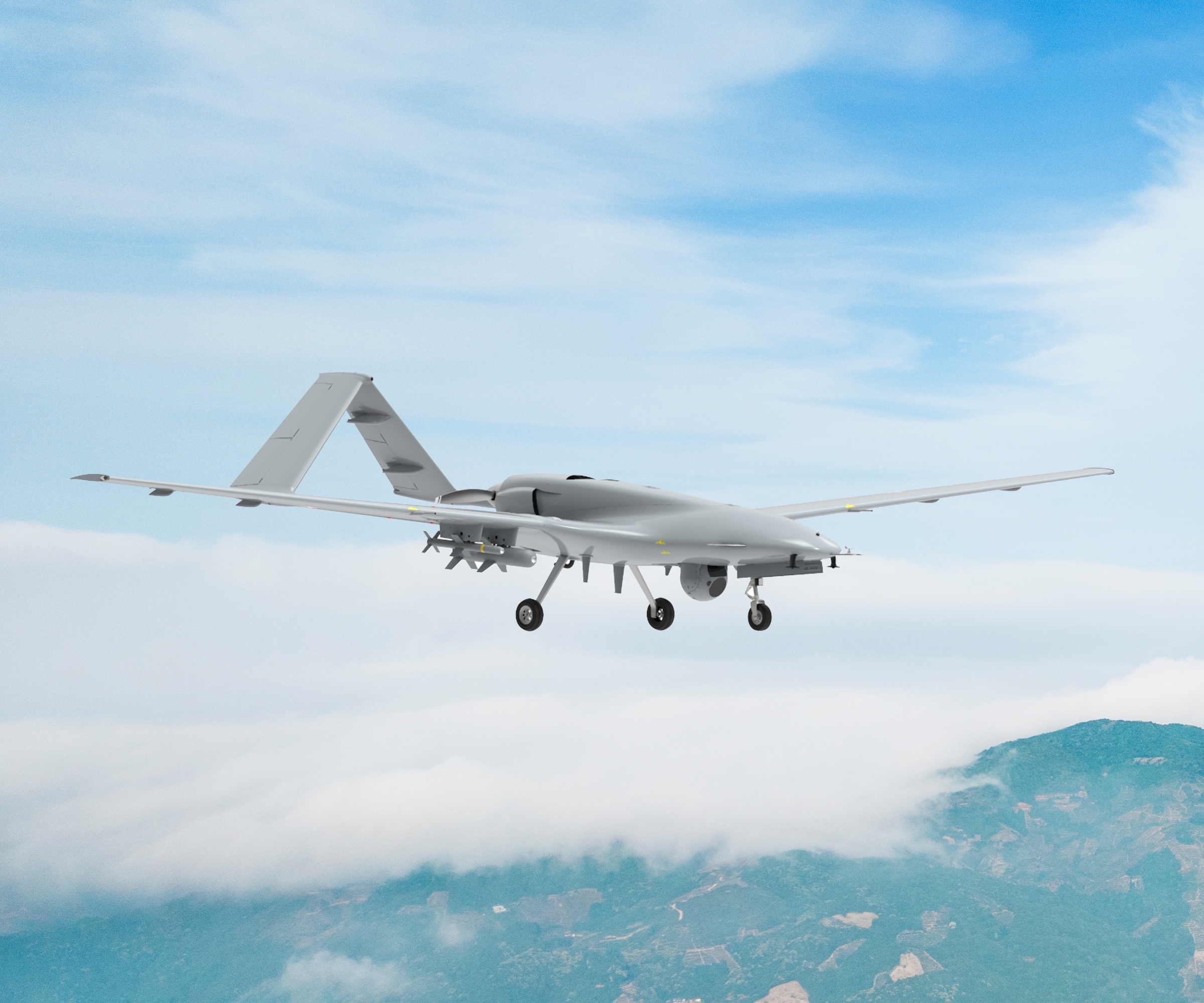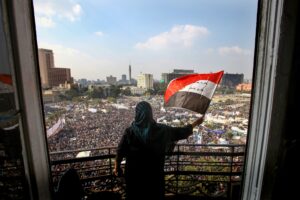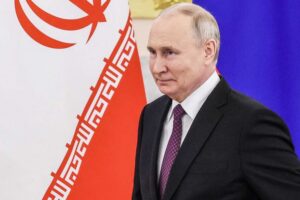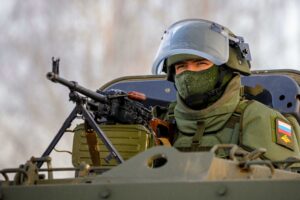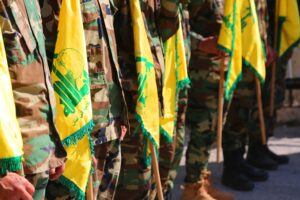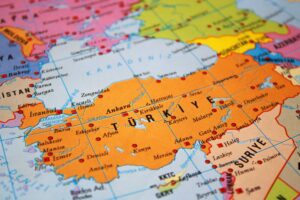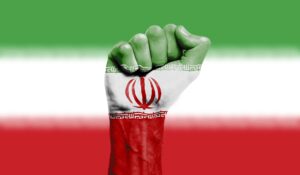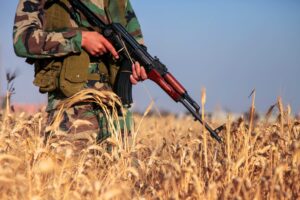Turkey’s assertive foreign policy adopted by President Recep Tayyip Erdogan led to the expansion of the country’s military footprint in Syria, Northern Iraq, Libya, the Eastern Mediterranean, and most recently in Nagorno-Karabakh. While the geographic location of the conflicts differ, the patterns of Turkey’s military operations are somewhat similar, and this mainly has to do with a specific type of military aircraft: Unmanned Aerial Vehicles (UAVs).
Turkey’s drone adventures date back to the 1990s, during which it conducted intensive operations in the mountainous region of Eastern Anatolia against the Kurdistan Workers’ Party (PKK)—the Kurdish separatist group that is designated as a terrorist organization by Turkey, the EU, and the US. Aiming to overcome the geographic challenges, the Turkish Armed Forces (TSK) used imported drones for reconnaissance, surveillance, and patrolling purposes. However, given certain logistical problems, unexpected accidents as well as diplomatic tensions with the exporting country (as was the case with Israel after 2010), Ankara began investing in the production of its own UAVs. In 2014, the Turkish Baykar Defence Company produced Bayraktar Tactic Block 2 (TB-2) which was regarded as a milestone in Turkish drone technology. Armed Bayraktar TB-2 drones are able to operate reconnaissance, surveillance, and intelligence flights during the day and night, as well as carry out armed attacks or transfer ammunition to the battlefield. It has proved to be highly efficient in eliminating battle tanks, armored vehicles, mobile air defenses, and artillery. The unit cost of these drones is around $5 million, which is much cheaper compared to the American MQ-9 Reapers ($30 million) or Israeli Herons ($10 million) and is able to compete with Chinese Wing Loong drones too ($1-2 million).
Currently, TSK operates more than 130 drones of various types in different regions beyond Turkish borders on a continuous basis.
With Bayraktar TB-2, Turkey emerged as an upcoming drone power in the global arena, and the country didn’t hesitate to use these systems in different conflicts either, raising concerns over regional security in the MENA region. Currently, TSK operates more than 130 drones of various types in different regions beyond Turkish borders on a continuous basis. This aggressive use of combat drones by Turkey can be explained by different strategic considerations: power projection, reducing the dependency on arms imports, as well as the desire to increase arms-sale capacities to other countries.
Power Projection
During the last decade, Erdogan’s ambitions to make Turkey a regional power have been reinforced by developments in the Turkish aerospace industry. Conflicts across the MENA region on the other hand provided a platform for Ankara’s motivation to project its power by operationalizing its newly produced drones. Instead of diplomacy, Turkey turned to hard-power tactics to resolve perceived regional problems. After Erdogan’s alliance with ultra-nationalist parties on the domestic political scene, Ankara’s foreign policy went through a process of transformation, becoming more hawkish and interventionist.
Turkish-made UAVs were regarded as efficient means to achieve the country’s newfound regional goals while providing extra air power to the Turkish military. During TSK’s three different incursions to Syria, aiming to prevent the establishment of a Kurdish state in the north of the country and support Syrian opposition factions, a large number of Bayraktar TB-2s were operated. Turkish drones contributed to the success of these operations and facilitated Turkish troops’ advancement in Afrin, Tel Al-Abyad, and Ras-Al-Ayn regions.
Turkish drones also played a significant role in the Libyan Civil War, where the UN-recognized Government of National Accord (GNA) and Libyan National Army (LNA) forces were fighting against each other. In December 2019, the Libya–Turkey maritime deal gave Turkey an advantage in its conflict with Greece in the Eastern Mediterranean in exchange for military support to the GNA. The Turkish military began supplying armed drones to their Libyan allies which helped the GNA to repel LNA forces and regain the coastal towns around Tripoli. The world witnessed the largest drone war in history as the LNA was also using drones, specifically Chinese-made Wing Loong II systems supplied by the United Arab Emirates. Regarding cruising altitude, range, and speed, Wing Loong II drones had advantages over Bayraktar TB2s, yet Turkish-made drones were still able to destroy the LNA’s military vehicles defense systems and ground targets. Turkey’s intervention in the civil war turned the tide in Libya and it was mostly because of the heavy use of Bayraktar TB2 drones in the flat desert area of the Northern side of the country—an optimal geographic feature for airpower. In the end, the LNA ended the Tripoli siege and retreated from the strategic Al-Watiya airbase.
Power projections abroad bolstered Erdogan’s position in domestic politics.
It is important to note that such power projections abroad bolstered Erdogan’s position in domestic politics while the use of UAVs became part of the ruling party’s nationalist narratives. For instance, pro-government media outlets continuously displayed the moments of Turkish UAVs shooting at enemy targets while narrating the “success” of military operations. Erdogan’s nationalist strategy and hard power tactics beyond Turkey’s borders are still going on strong. According to Turkish sources, Operation Peace Spring in 2019 helped Erdogan increase his popularity to almost 60% among voters as his decision to invade Northern Syria got support even from opposition parties. In general, while Erdogan gains popularity with his hawkish foreign policies, the country is getting more isolated from the rest of the region day by day.
Reducing Dependency on Arms Imports
Turkey’s eagerness to reduce its dependency on arms imports was another factor that prompted it to concentrate on manufacturing and using its own UAVs as an alternative to Western arms imports. According to Wikileaks documents, in 2009, Ankara already had intentions to maintain its drone operations against the PKK without US assistance. Attempts to buy American Predator drones were repeatedly dismissed by the US Congress. Moreover, strained relations in the following years came with further sanctions as the country was removed from the F-35 joint strike program by the US and constantly threatened with arms embargoes imposed by the EU.
The relatively low-cost airpower provided by UAVs was too attractive for Ankara to ignore. Consequently, it searched for alternative means to Western military technology. Compared to the traditional air force, armed drones reduce the costs of air operations by millions of dollars that would otherwise have to be spent on buying fighter jets as well as operating and maintaining them in a consistent manner. Combined with Turkey’s exponentially growing defense industry, Ankara saw no reason for looking to import drones from elsewhere. During the four-year period between 2015 and 2019, Turkey’s share of arms imports decreased by 48%, and there is no doubt that its developing drone industry played a major role in this.
Turkey's defense industry is still dependent on Western technology to an extent, and the imposed sanctions still affect the sustainability of its military productions.
However, the country’s defense industry is still dependent on Western technology to an extent, and the imposed sanctions still affect the sustainability of its military productions. For example, after the controversial use of Turkish drone technology by Azerbaijan in the Nagorno-Karabakh conflict, the Canadian government suspended sales of its engine technology to Turkey. Such sanctions will surely have negative effects on the Turkish drone industry since the country still lacks the technological capacity to manufacture engines and various other drone parts by itself.
Desire to Increase Its Arms Sale Capacity
Perhaps the most intriguing incentive for Turkey to use its own UAVs in different conflicts, and with increasing frequency, might be the country’s desire to promote these drones as products for export, increasing its future arms-sales. Bayraktar TB-2 drones have gained a global reputation after successful operations in Syria and Libya which led certain countries such as Qatar, Azerbaijan, and Ukraine to buy these weapons systems from Turkey. Qatar’s motivation for buying drones mostly has to do with contributing to its Turkish ally’s economy.
Ukraine on the other hand, has positioned itself much closer to Turkey as the two countries’ defense companies recently cooperated in developing military technology. Ukraine procured 12 of the Bayraktar systems, which could soon be followed by a new deal for another 48 drones. In exchange, Turkey has been benefiting from Ukraine’s century old history of aviation. The Baykar company is using Ukrainian turboprop engines for its upcoming high-end combat drone, the Akinci. In October 2020, Erdogan and Ukraine’s President Zelensky signed a new military cooperation deal revealing the two countries’ intentions to launch joint projects for the production of indigenous warships and aircraft.
Azerbaijan is another country that showed interest in purchasing Bayraktar TB-2 drones after seeing their efficiency in Libya and Syria. After Baku announced its readiness to buy Turkish drones last June, the two countries increased their military cooperation. Eventually, the Azerbaijani army purchased and operated these drones against Armenia in the recent Nagorno-Karabakh war, during which Turkey explicitly supported its Azerbaijani ally. The efficiency of the drones was praised by Azerbaijani president Ilham Aliyev since they had a major role in breaking heavily buttressed Armenian defensive lines.
This conflict, as the ones in Syria and Libya, served as an advertisement for Turkish drone technology.
Needless to say, this conflict, as the ones in Syria and Libya, served as an advertisement for Turkish drone technology. In October 2019, amidst the ongoing Karabakh war at that time, Serbia joined the list of countries that are interested in buying Turkish drones. In brief, having been involved in various conflicts, Turkey seems to benefit from showing off its drones to the world. At the same time, the pro-government media is putting a lot of effort into promoting the advancements made possible by Turkish-made UAVs, stirring up domestic support for Erdogan.
Conclusion
Turkey’s efforts to develop its domestic arms are not exclusive to Turkish-made UAVs, yet they have become the face of its growing defense industry. The country became the 14th largest global arms exporter while increasing its export value from $248 million to $3 billion in two decades. However, it is currently unknown if the industry’s growth will be sustainable in the long term because of existing and potential future sanctions imposed by various western countries, Turkey’s isolated position due to its aggressive foreign policy, and its looming economic recession. The Turkish arms industry is not self-sufficient at the moment as it still needs to import much of its arms equipment from Western counterparts. According to the IMF’s recent reports, Turkey’s estimated GDP in 2020 is 650 billion dollars, having faced a 30% loss since 2013. The Turkish lira has also lost from its value during the last seven years, getting 80% weaker against the dollar.
Facing these challenges, Erdogan tries to divert the Turkish public’s attention with his combative rhetoric, making Turkey act more aggressively in its foreign affairs. In the short term, the aggressive use of Turkish-made UAVs abroad might serve Erdogan’s nationalist narrative by presenting this technology as a source of national pride. However, in the longer term, Turkey might not be able to sustain this industry if Ankara keeps ignoring financial limitations of the present and continues its aggressive and costly foreign policy strategies.


